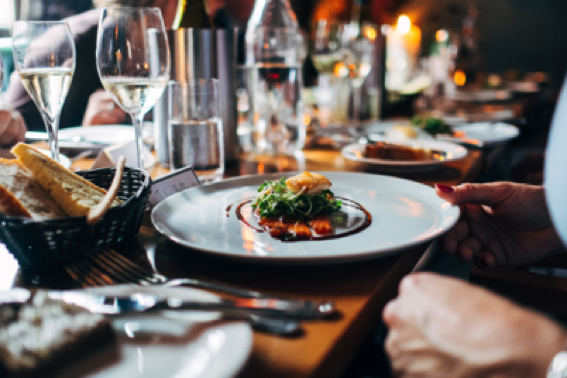Figure 1: Photo by Jay Wennington on Unsplash
Hello there! Hopefully you enjoyed our first article: your first day in Germany. In this article, we’re covering a topic you will use almost everyday in Germany! Today’s topic is: Going to a restaurant. Imagine you travelled to Germany for vacation and rented an apartment in a German city. Once settled in, you realize you’re hungry. By the way, “Ich habe Hunger“ means “I am hungry“ and “Ich habe Durst“ “I am thirsty“. So, time to visit a local restaurant.
But what will you say? Do you know the names of German food and drinks? More importantly, do you know how to order?
If you were uncertain on any of those topics then you’ve found the right article! This article is split up in two parts. By the end, you’ll be prepared to ask for a table, read the menu, order something delicious, pay your bill, and leave your waitstaff a fine compliment! Sound good? Los geht’s!
Topics for this lesson will be:
1.) Asking for a table
2.) Reading the menu
3.) Ordering food
4.) Did you like it?
5.) Paying
If you’re more interested in an overview of what you’ll learn in the first week working with us at ThinkinGerman.com, check out this article.
1) Asking for a table
Imagine you walk into Lindwurm Stüberl on Lindwurm street 32 or Augustiner Bräustuben on Landsberger Straße 19 in Munich. You smell wurst cooking on a grill and fresh Brezeln and it smells delicious! After entering the restaurant a waiter/waitress asks if you have a reservation. The question would be: “Haben Sie eine Reservierung?“ (“Do you have a reservation?“). Remember that we have a formal and informal way of speaking in Germany. If you would like to read a little more about it, I recommend you read the following article. They may also ask: “Haben Sie reserviert?“ (“Did you reserve?“). Did we use past tense here? Yes, but don’t panic. We will talk about it in another article. Since it’s early in your vacation, let’s imagine you didn’t reserve a table. You would say, “Nein, ich habe keine Reservierung.“ (“No, I don’t have a reservation.“)
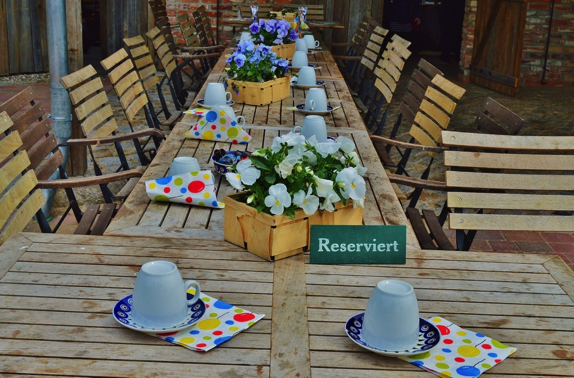
Photo by Reverente on Pixabay
No problem, reservations are not always required in most German restaurants, but if you know that you will go to some place we recommend you always to reserve.
You are lead to a table and you sit down. First step done. The waitress would say perhaps “Bitte sehr.“ (“Please – have a seat“) and you would respond “Vielen Dank“ (“Thanks a lot“) which is very polite, or simply “Danke“ (“Thanks“) which is also totally fine. In some very busy places or places with self service people would sit down without waiting for the waitress.
1) Ordering food
Now you have a seat, it’s time to order some food! The waitress brings you a menu and you have a look. In case you don’t get a menu, you can simply ask: “Die Speisekarte bitte.“ (“The menu please.“)
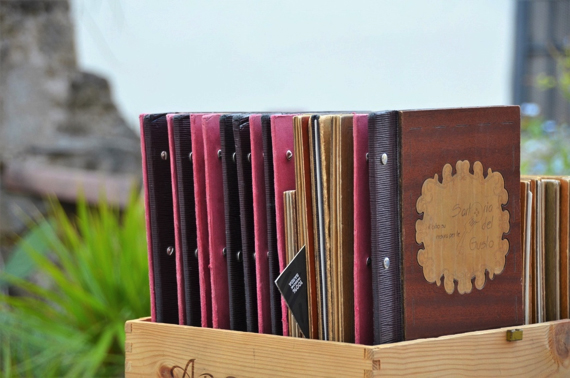
Photo by malte1612 on Pixabay
Often the menu at a German restaurant is long! For new German speakers, this can be overwhelming. So we thought you might benefit from an introduction to the most common items found on traditional German restaurant menus. This way, after reading (and bookmarking!) this article, you’ll be prepared to order food like a native speaker. So as we continue our narrative, enjoy a glimpse into German restaurant cuisine.
Something to drink (“Trinken“) perhaps first?


Photo by Engin Akyurt on Pixabay
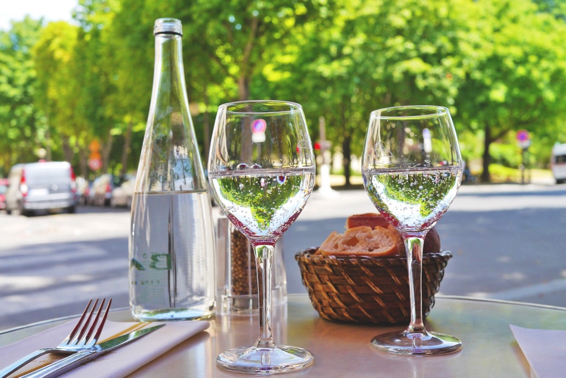
Photo by LUM3N on Pixabay
Pro Tip: If you would like to try a fresh variation of a classic German beer, you should try a “Radler“. “Radler“ consists of a 50:50 mixture of beer and sparkling lemonade. The term Radler originates with a drink called Radlermass (literally “cyclist liter”) that was originally created by Innkeeper Franz Kugler in a small town named Deisenhofen, just outside Munich. Fast running out of beer on a beautiful June day in 1922, he blended it 50/50 with a lemon soda he could never seem to get rid of, and the rest is history. It became a refreshing less-alcoholic beverage on the journey.
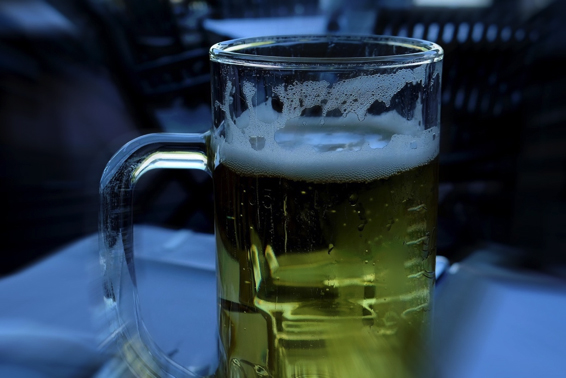
Radler; Foto by moritz320 on Pixabay
Pro Tip: There are also other mix beer drinks in Germany, for example “Russ“ in Bavaria which is a mix of “Weißbier“ and lemon soda.

Let’s start with the different names for the dishes now. The appetizer is called “Vorspeise“ (“Die Vorspeise“) in German and depending on the kind of restaurant you will have different appetizers in the menu. Perhaps you would like a „Suppe“ (“Die Suppe“ – “soup“).

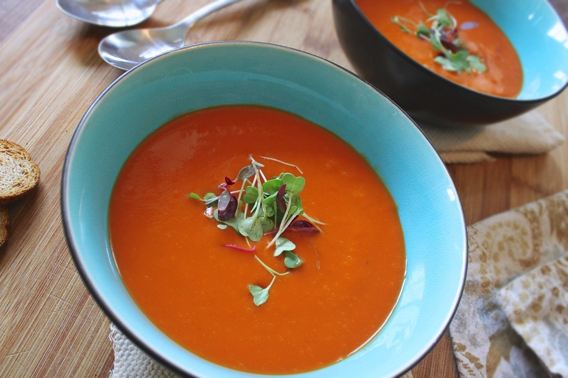
Tomatensuppe; Photo by ponce_photography on Pixabay
Pro – Tip: We highly recommend you the “Asparagus creme soup”. (Die Spargelcremesuppe) Asparagus one of the vegetables with the highest production in Germany and the soup out of it is delicious.
You’d rather like something cool and fresh? Perhaps a salad or a sandwich?
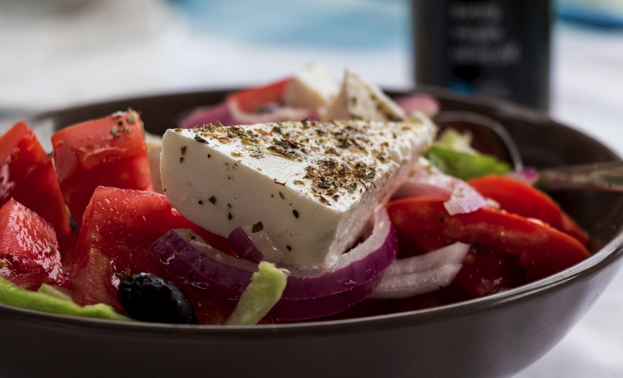
Der griechische Salat; Foto by Lukas Bieri on Pixabay
So, enough with the appetizers. You would like to eat something bigger because you’re reallyhungry. So let’s move on to the main dish, “die Hauptspeise“ or “das Hauptgericht“ (“main dish“).
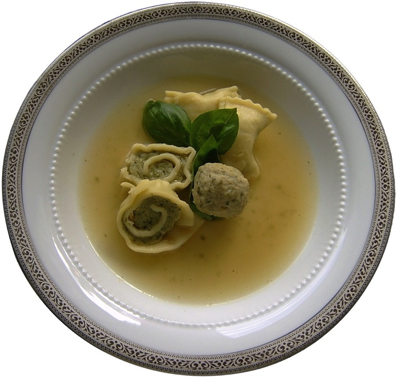
Maultaschen; Photo by Lebensmittelfotos on Pixabay
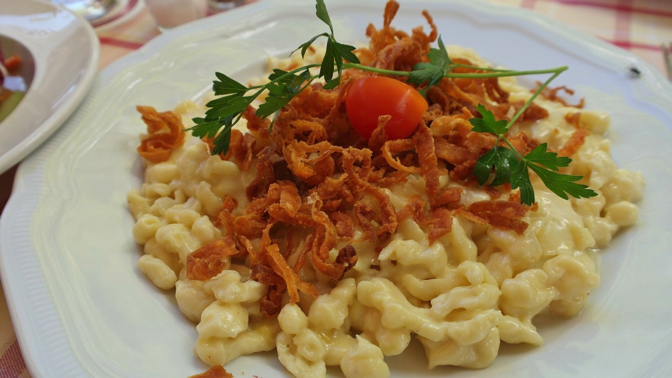
Käsespätzle; Foto by RitaE on Pixabay
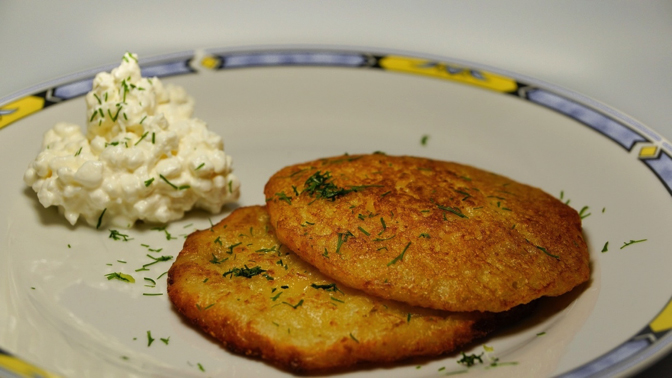
Kartoffelpuffer; Foto by Taken on Pixabay
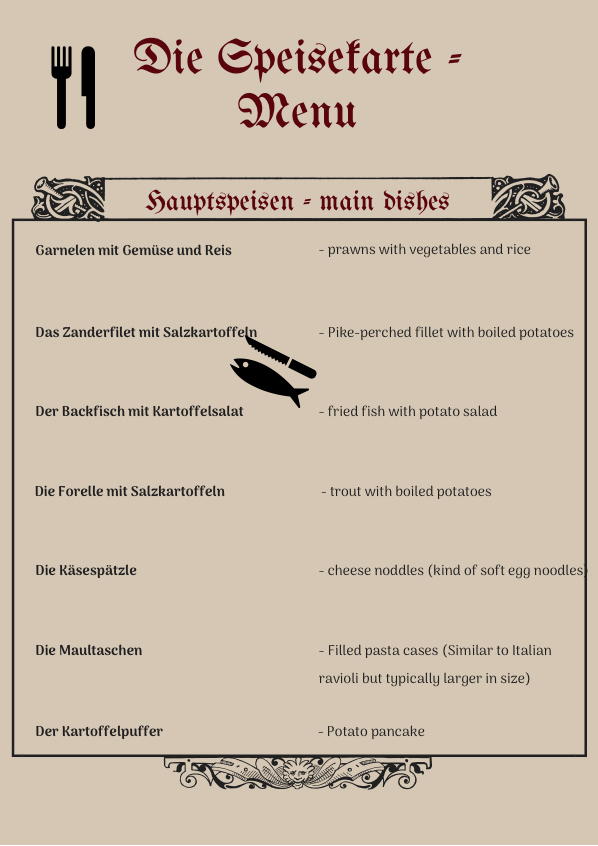
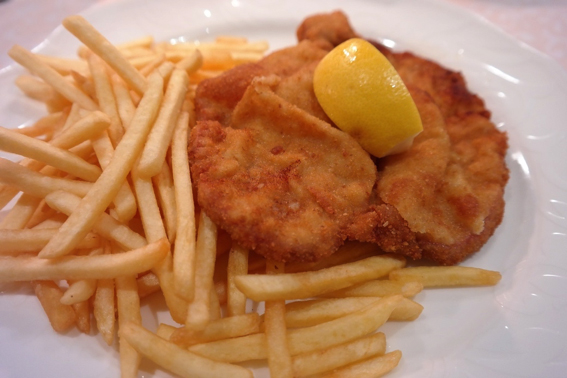
Wiener Schnitzel; Foto by Hans on Pixabay
Pro Tip: Traditionally, a “Wiener Schnitzel“ is made from a cutlet of veal, pounded thin, dipped in flour, beaten egg and breadcrumbs, and then fried until golden brown. A popular variation is made with pork instead of veal, because pork is cheaper than veal. To avoid mixing up different products, the Austrian and German food committees have decided that a “Wiener Schnitzel” must be made of veal. A Schnitzel made of pork can be called “Schnitzel Wiener Art“.
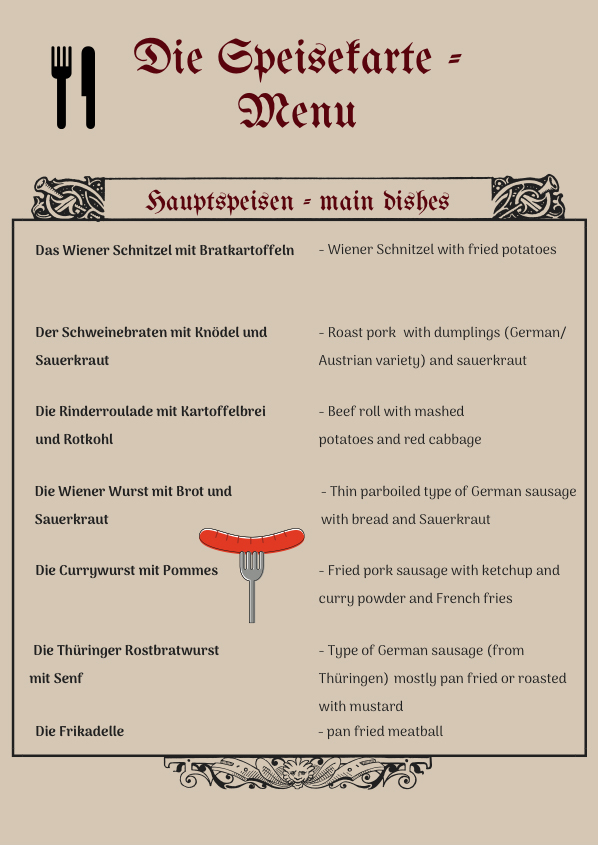
Pro Tip: Depending on the region in Germany there are sometimes different expressions for the same meal. One good example are meat balls. They are called “Die Frikadelle“ in Western and Northwestern Germany, “Die Bulette“ in North East Germany for example in Berlin, “Der Klops“ in East Germany for example in Magdeburg, “Das Fleischküchle“ in Southwestern Germany for example in Stuttgart and “Das Fleischpflanzerl“ in Bavaria
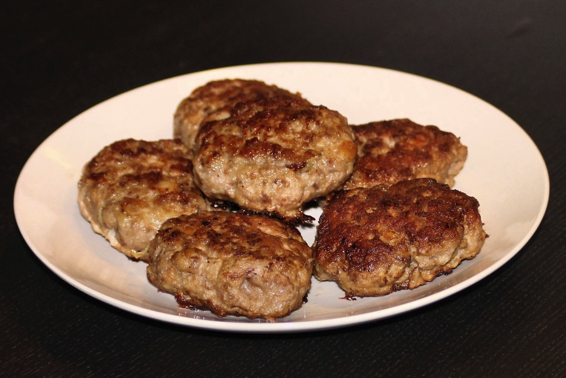
Die Buletten; Foto by hansbenn on Pixabay
You would like to order some dessert („Die Nachspeise“)? Here some desserts for those who like sweet.
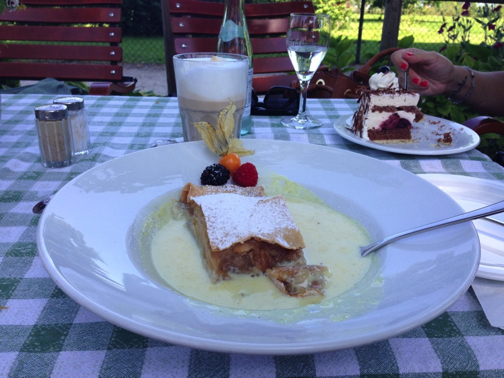
Der Apfelstrudel
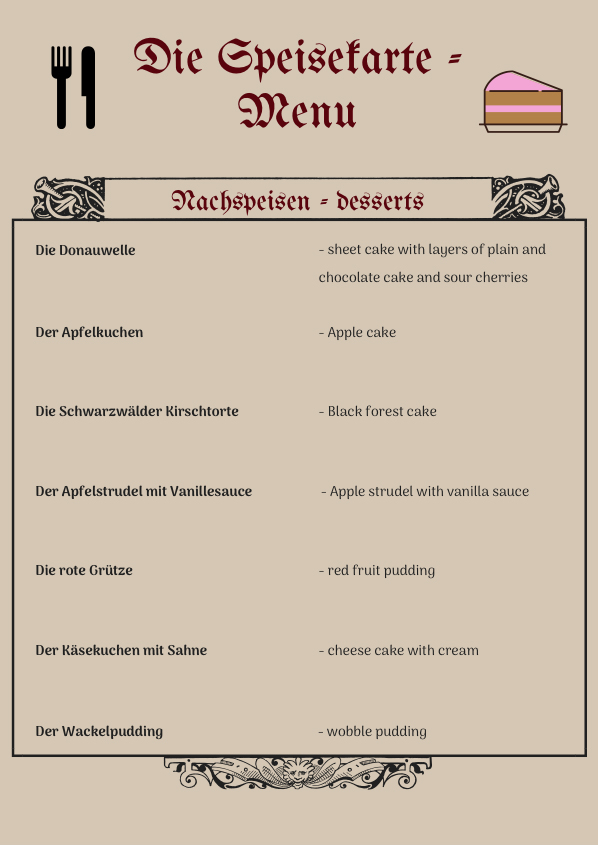
You like going to restaurants and are looking for a nice dictionary. I can recommend you the Langenscheidt Universal-Wörterbuch. It has a nice picture dictionary at the beginning and it will be a good helper in each situation.
Mmm, that all sounded delicious! So you`ve read the menu and made a decision. Now you’d like to order … but how? Kein Problem! Let’s talk about that this in Ultimate German Language Learner’s Guide to Ordering Food in a Restaurant Part two.
Glossar:
Der Apfelkuchen – Apple cake
Der Apfelsaft – Apple juice
Der Apfelstrudel – Apple strudel
Der Backfisch mit Kartoffelsalat – Fried fish with potato salad
Der bayerische Wurstsalat – Bavarian sausage salad
Das Bier – Beer
Bitte sehr. – Please
Die Currywurst mit Pommes – Fried pork sausage with ketchup and curry powder and French fries
Danke. – Thanks
Die Donauwelle – Traditional sheet cake with layers of plain and chocolate cake and sour cherries
Essen – to eat
Die Forelle mit Salzkartoffeln – Trout with boiled potatoes
Die Frikadelle – Pan fried meatball
Der gemischte Salat – Mixed salad
Der griechische Salat – Greek salad
Der Gurkensalat – Cucumber salad
Haben Sie eine Reservierung – Do you have a reservation?
Haben Sie reserviert? – Did you reserve?
Das Hauptgericht – Main dish
Die Hauptspeise – Main dish
Die Hühnersuppe – Chicken soup
Der Hunger – Hunger
Ich habe Hunger – I am hungry
Ich habe Durst – I am thirsty
Die Kartoffel – Potato
Der Kartoffelpuffer – Potato pancake
Die Kartoffelsuppe – potato soup
Der Käse – Cheese
Der Käsekuchen mit Sahne – Cheese cake with cream
Die Käsespätzle – Cheese noddles (kind of soft egg noodles)
Kein Problem. – No problem
Der Krautsalat – Cabbage salad
Die Kürbissuppe – Pumpkin soup (sometimes with “Ingwer“ = “Ginger“)
Die Leberknödelsuppe (mostly in South Germany) – Liver dumpling soup
Die Maultaschen – Similar to Italian ravioli but typically larger in size
Das Mineralwasser – Sparkling mineral water
Die Nachspeise – Dessert
Nein – No
Nein, ich habe keine Reservierung. – No, I don’t have a reservation.
Der Obatzda – Bavarian cheese delicacy with camembert, butter and paprika
Die Pfifferlingcremesuppe – Chanterelle mushroom soup
Reservieren – to reserve
Die Reservierung – Reservation
Die Rinderroulade mit Kartoffeln – Beef roulade with potatoes
Die rote Grütze – red fruit pudding (literally “red groats“)
Der Rucolasalat mit Hühnchenbruststreifen – Rucola salad with chicken breast strips
Die Schwarzwälder Kirschtorte – Black forest cake
Der Schweinebraten mit Knödel – Roast pork with dumplings (German/Austrian variety)
Der Sekt – Sparkling wine
Die Spargelcremesuppe – Asparagus soup
Die Speisekarte – Menu
Die Speisekarte bitte. – The menu please.
Die Spezi – German soft drink mixing cola with orange soda
Das stille Wasser – Still water
Die Suppe – Soup
Die Thüringer Rostbratwurst – Type of German sausage mostly pan fried or roasted
Der Tomatensalat – Tomato salad
Die Tomatensuppe – tomato soup
Trinken – to drink
Vielen Dank. – Thanks a lot.
Der Wackelpudding – Wobble pudding
Der Wein – Wine
Das Wiener Schnitzel mit Bratkartoffeln – Wiener Schnitzel with fried potatoes
Die Wiener Wurst – Thin parboiled type of German sausage
Das Zanderfilet mit Kartoffeln – Pike-perched fillet with potatoes

